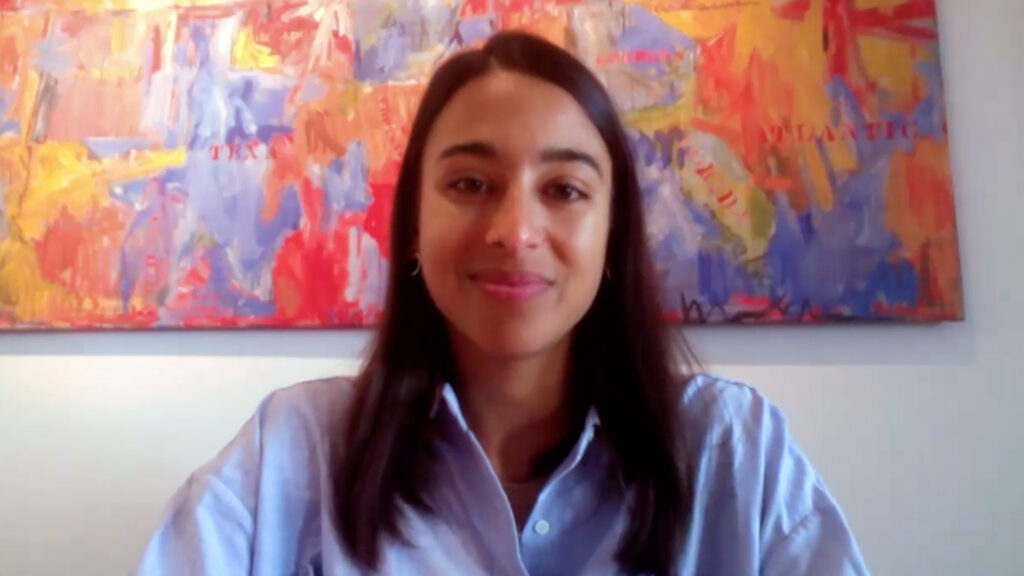The COVA study (NCT04472728) was a double-blind, placebo-controlled phase 2 to 3 study that investigated BIO101 for the prevention of respiratory deterioration in hospitalized COVID-19. touchRESPIRATORY were delighted to speak with Dr. Girish B. Nair (Beaumont Health, Royal Oak, MI, USA) around the mechanism of action of BIO101, the design, inclusion criteria and findings from the COVA study and the impact these findings will have on the COVID-19 response.
The abstract ‘Cova Results From a Double-blind, Placebo-controlled Phase 2/3 Study to Assess Efficacy and Safety of BIO101 in Hospitalized Severe COVID-19 Patients.‘ was presented at ATS 2023, 19-24 May 2023.
Questions
- What is the mechanism of action of BIO101? (0:23)
- What was the rationale for investigating BIO101 in hospitalized severe COVID-19 patients? (1:02)
- What were the design and inclusion criteria of the COVA study? (1:41)
- What were the primary and secondary endpoints and how well were these achieved? (2:48)
- What were the results and main findings of the trial? (3:43)
- What impact will these findings have on the COVID-19 response? (4:43)
Disclosures: Girish B. Nair discloses participating in speaker’s bureaus with Boehringer Ingelheim.
Support: Interview and filming supported by Touch Medical Media Ltd. Interview conducted by Sophie Nickelson.
Filmed in coverage of the ATS Annual Meeting.
Click here for more content on COVID-19.
Transcript
What is the mechanism of action of BIO101? (0:23)
BIO101 is the investigational product from Biophytis. It’s a 20-hydroxyecdysone plant product. As you probably know, the COVID-19 virus acts, especially inhibits the ACE2 receptor pathway. The BIO101 activates the Mas receptor which is a protective arm of the renin-angiotensin system and supposedly would work better in patients with COVID-19 who are hospitalized.
What was the rationale for investigating BIO101 in hospitalized severe COVID-19 patients? (1:02)
Alluding to with the mechanism of action the COVID-19 specifically has an affinity for ACE2 receptor, which is mostly found in the respiratory system most often and causes respiratory deterioration. For that reason, BIO101 would be really good candidate drug product to actually specifically work in that pathway and to activate the Mas receptor and can prevent respiratory deterioration and mortality. So that was the reason why we chose to use that product in this particular population.
What were the design and inclusion criteria of the COVA study? (1:41)
It’s very important to know that this is a pragmatic trial, it was a randomized double blind placebo controlled trial with one to one active and placebo arm, where patients were provided with 350 milligrams VID of BIO101 versus placebo. It was done as a multicentre trial. We included hospitalized patients who required oxygen or were hypoxemic to less than 92% and over the age 45 with proven COVID-19 infection. Key exclusion criteria included, anyone who was receiving VAC mechanical ventilation or life expectancy is less than seven days. But as I mentioned in the inclusion criteria, because it was a pragmatic trial, we did approve other drugs confirmed for which were used during the time period from September 2020 to March 2022. That was at the time being used for COVID-19.
What were the primary and secondary endpoints and how well were these achieved? (2:48)
So the primary endpoint was proportionate patients who had either mortality or death or respiratory failure at day twenty eight, which included invasive mechanical ventilation or ECMO, or high flow nasal cannula. Key secondary endpoint at day 28 was proportion of patients who were discharged from the hospital with improvement in symptoms and we also looked at 90 day mortality and time to death. The trial was essentially planned for 310 patients, but as the disease was evolving, we had to stop once the patients were at to around 233 patients were enrolled, but we did achieve the key endpoints that was proposed.
What were the results and main findings of the trial? (3:43)
The main findings of the the trial was we did achieve statistical significance despite low enrollment, with BIO101 percentage of patients who achieved the primary endpoint was 15.8, as opposed to 26 person in the placebo arm, which was around 11.4 adjusted difference. Which is statistically significant, which amounts to a 44 person risk reduction of mortality or invasive mechanical ventilation. At day 28, we saw a very similar trend at day 90 with 43 percent risk reduction to time to death or mortality, but there was a normal statistical positive signal. But did not achieve significance primarily because we did not enroll the total number of patients we planned to.
What impact will these findings have on the COVID-19 response? (4:43)
It’s very important to know as the disease is evolving or the infection and the pandemic is evolving at this stage, the virus is most likely to mutate and certain, the vaccines which are currently used would not be potentially useful in near future. So we need more medications in the therapeutic armamentarium that we can potentially use in something like BIO101, which has mechanistic impact on the virus pathogenesis, probably would be an ideal candidate for such mutant viruses even if it comes in the future. So I think it holds us a lot of promise, especially in the pandemic. Even though it’s the total number of patients in US now is around 22,000, we do expect the disease will continue especially once the fall comes and there’s a small spike in the wild outbreak.
Subtitles and transcript are autogenerated












